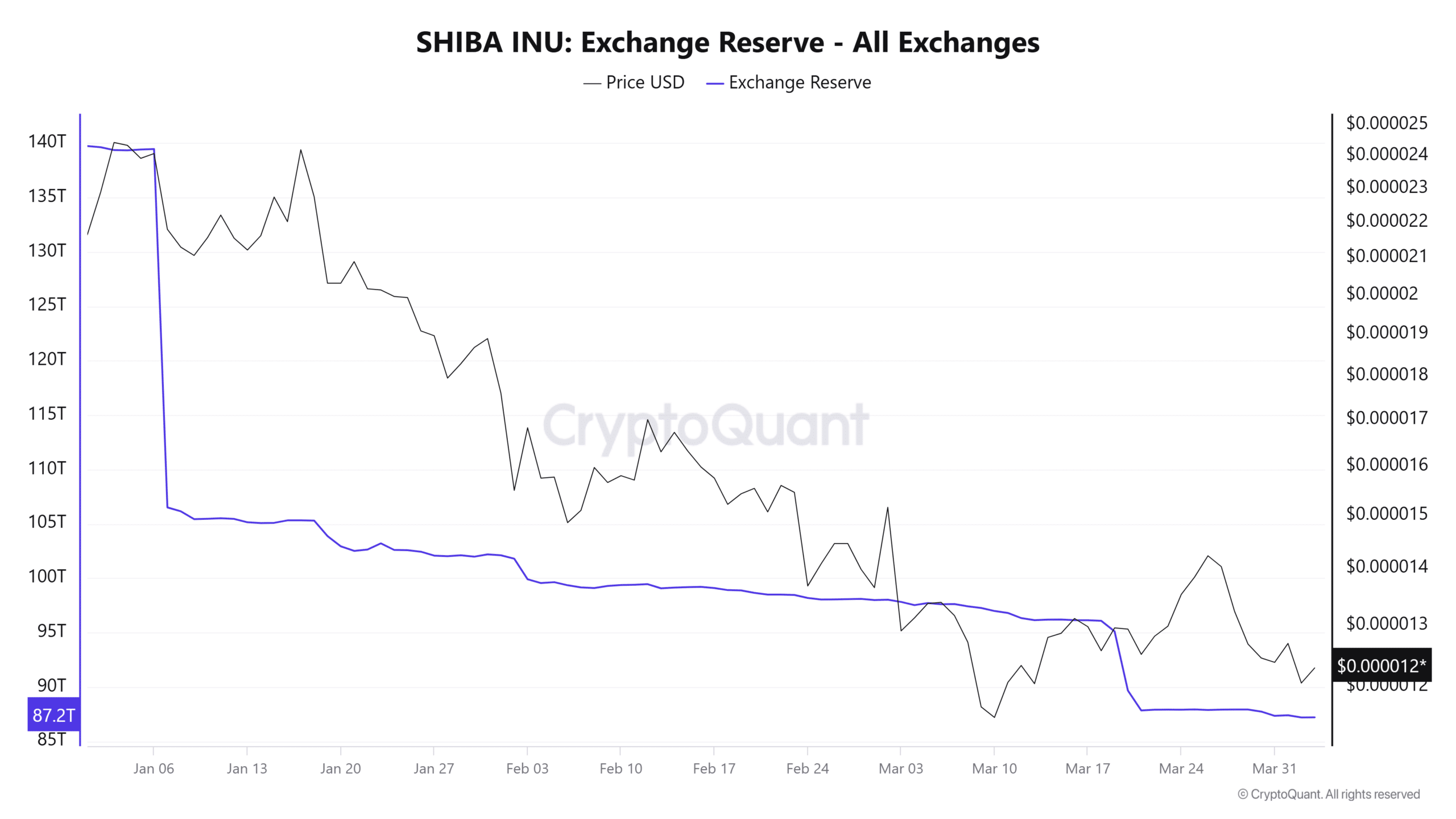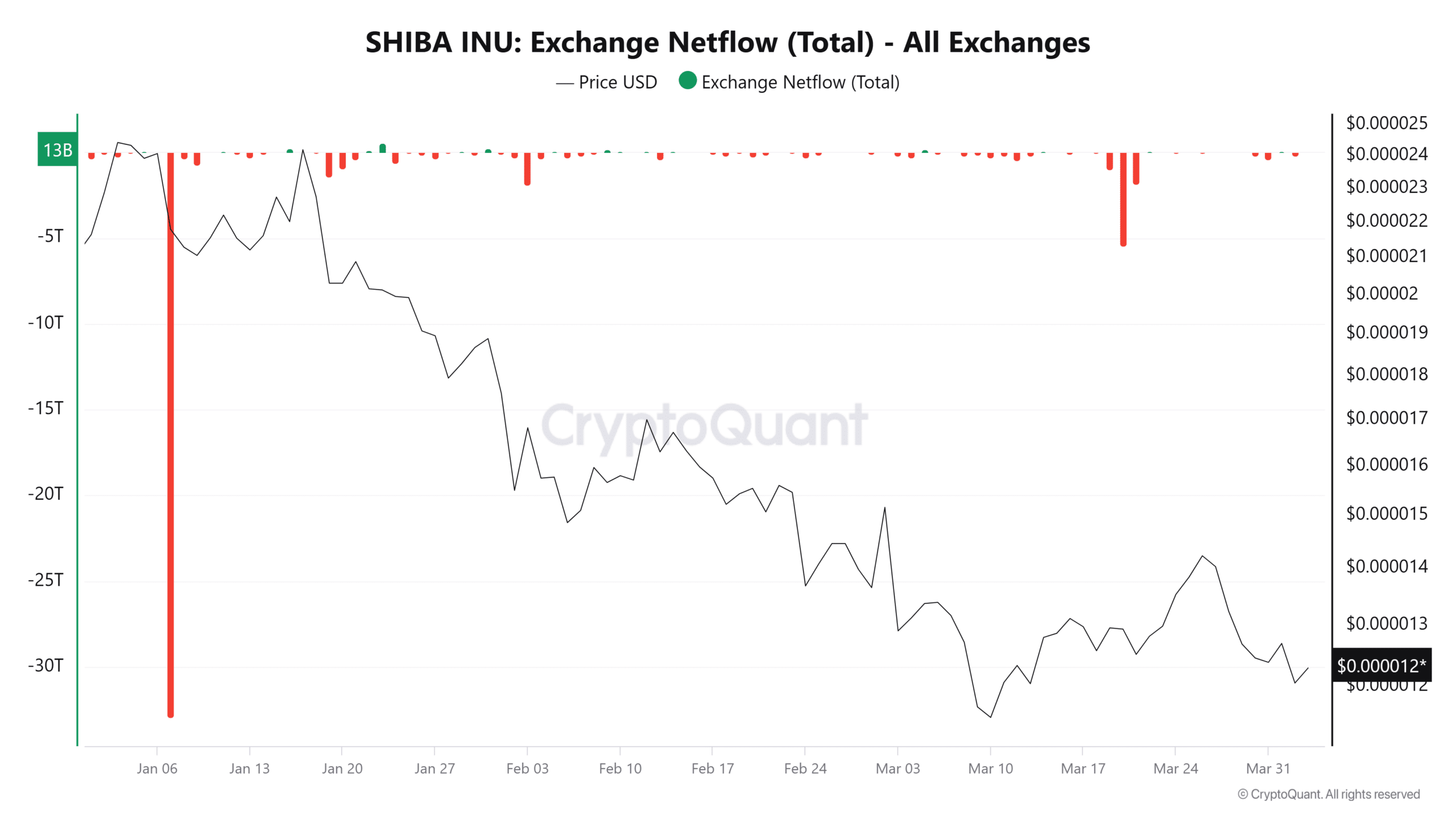-
Shiba Inu’s long-term holders rise 7.5% while exchange reserves fall 37%, indicating a shift in market dynamics and reduced sell pressure.
-
As investor conviction among long-term SHIB holders strengthens, the trend suggests a matured market where speculative trading diminishes.
-
According to IntoTheBlock, over 80% of SHIB’s total supply is controlled by long-term holders.
Shiba Inu’s long-term holder surge and dwindling exchange reserves highlight a shift towards reduced selling pressure and increased market maturity.
Diamond hands take the throne
A comprehensive analysis of wallet behavior revealing a vibrant growth in SHIB holdings by long-term investors underscores a significant market evolution.
SHIB whales saw their holdings increase by 7.5% in Q1 2025, even in the face of a 45% price decline. Wallet data indicates that balances grew from 732 trillion to 787 trillion tokens within the reported timeframe.

Source: IntoTheBlock
This contrast is stark when compared to mid-term investors, who reduced their positions by 18%, and short-term traders, whose holdings plummeted by 43%, decreasing from 36 trillion to below 21 trillion SHIB.
Where did all the SHIB go?
Supporting this behavioral pivot, data from CryptoQuant reveals that SHIB exchange reserves dropped 37.6%, from 139.7 trillion to 87.2 trillion during the same period.

Source: CryptoQuant
This substantial outflow typically suggests a tightening sell-side liquidity, which is often seen as a bullish indicator in volatile market conditions. However, SHIB’s price continued to decline, implying larger market forces or lack of sufficient demand.
A whale of a plot twist
Expounding on the market dynamics, IntoTheBlock’s analysis of large holder netflow data presents a contradictory narrative. On January 6th and 7th, over 33 trillion Shiba Inu tokens flowed into exchanges.

Source: IntoTheBlock
Netflows subsequently plummeted by over 212% through February and March. Despite these inflows, SHIB’s price remained relatively stable during significant trading events, suggesting that the activity of large holders may no longer be the decisive factor in price movements.
Buy the dip or exit the ship?
Data from CryptoQuant illustrates notable spikes in netflow, with significant deposits often preceding price declines. For instance, on January 7th, 32.94 trillion SHIB entered exchanges, resulting in a price drop to $0.0000218, and again on March 2nd, a 33.84 trillion influx led to a decrease to $0.00001516.

Source: CryptoQuant
Despite these strategic repositioning moves by significant holders, exchange reserves continued to decline, indicating that withdrawals were superseding sales from major players.
The calm before the climb?
Despite an 18% price drop, SHIB’s daily chart remains above crucial support levels, with on-balance volume demonstrating a trend towards growing accumulation. A shift in holding durations, declining exchange reserves, and positive netflows indicate a structural transformation within the market.
With long-term holders now significantly controlling the supply and speculative trading subsiding, the prevailing data suggests emerging confidence among investors. If this trend of accumulation continues while exchange liquidity tightens, Shiba Inu may experience more stable behavior in the market moving forward.
Conclusion
In wrap-up, the landscape for Shiba Inu is evolving. Long-term holders are increasing their dominance, exchange reserves are falling, and the speculative trading that once defined the market is giving way to more stable accumulation strategies. This potentially sets the stage for a more resilient price performance in the future.
